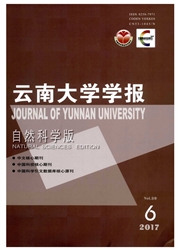

 中文摘要:
中文摘要:
红河是我国西南地区一条重要的国际河流,研究红河流域景观格局演变特征并分析原因,对维护流域生态系统健康和跨境生态安全具有重要意义.基于1990、2000、2010年3期土地利用数据,运用景观生态学原理,对研究区1990-2010年景观格局时空变化特征进行分析.结果表明,红河流域优势景观为林地、草地及耕地.各景观类型中,林地景观转移数量最大,主要输出为草地和耕地,说明在局部地区,林地开垦为耕地的现象仍然存在;耕地景观转移数量次之,受退耕还林及城市化等政策影响,耕地面积持续降低,主要转向林地和草地;聚落面积持续增加,主要由耕地转换而来.2000-2010年间的每一种景观类型的动态度都显著高于1990-2000年,而变化最为剧烈的景观为聚落,表明随着经济社会发展,人类活动对景观的扰动更为强烈.
 英文摘要:
英文摘要:
Red River is an important international river in southwest China, to study onlandscape evolution incharacteristics and analyze its causes are important for maintaining ecosystem health and transboundary eco-secu-rity.Papers based on three years land use data about the late 1990,2000 and 2010, using landscape ecology prin-ciple to analyze the study area' s characteristics oftemporal and spatial landscape pattern variation during theyears 1990--2010.The vesult showed that the dominant landscapes are forest,grassland and farmland inRed RiverBasin.The maximum transfer is forest, the main output isgrassland and farmland.h means forest into farmlandstillexists in the local area;Farmland followed by the number of transfer, forest affected by the policy and urbaniza-tion, so it continues to decrease, the main output is forest and grassland;In contrast, settlement area continued toincrease mainly by the transformation from farmland.In 2000--2010, each relative dynamic degree of landscapetypes were significantly higher than 1990--2000, however the most dramatic change in the landscape is settle-ment.It shows that with the economic and social development,human activitiesdisturb the landscape become moreintense.
 同期刊论文项目
同期刊论文项目
 同项目期刊论文
同项目期刊论文
 期刊信息
期刊信息
